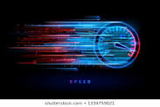
Conditional Remix & Share Permitted
CC BY-SA
Students compare slope as it relates to distance vs. time. Using a simulation on Desmos, students find that faster speeds create steeper slopes on a graph.
- Subject:
- Mathematics
- Patterns, Functions, and Algebra
- Material Type:
- Activity/Lab
- Interactive
- Simulation
- Date Added:
- 11/30/2019
